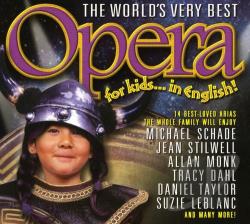I have a very basic/surface level understanding of music, but I appreciate the Waldorf education method of introducing music. So I've included a few thoughts about that, as well as some thoughts about classical music and such.
1. Let kids explore sounds and rhythms
Childhood is a time for exploration and expression without conformity which stifles creativity and imagination if begun too early. Kids should explore with things they are surrounded with and with their bodies. It's a great idea to help kids find song/sound everywhere and learn to express themselves sufficiently (via imitation and extemporaneous creation using their voice, pots and pans, dancing, etc.).
2. Introduce the Pentatonic Scale
I don't know a lot of music theory, but I understand that the pentatonic scale is a scale which has only 5 of seven notes of a scale (2,3,5,6,7--ex: c major would be D,E,G,A,B). All notes in this scale sound nice together and there is no disharmony...so its ideal for children who know no music rules yet. Typical instruments you can find in a pentatonic scale--if you look hard--are recorders, harps and xylophones.
This is easy on a my harp because the C and F strings are usually colored. So I can sit and play my harp's white strings and everything sounds nice. I love just sitting at it and making up songs without stopping. I feel so empowered to make good music. If you really want your children to learn to fully express themselves, they should start there to feel enthusiasm and empowerment. Then when they are ready for the logical stage and delving into rules and details they can start the deeper theory and the next stage instruments like violin, flute and piano.
3. Intro to Classical Music/Instruments
Also, surround children with good music. Here are a few ways to get classical music into any kids life by more fully integrating the experience beyond just passive listening and to accustom them with listening for instruments, visualizing what is happening, and imitation.
a) Can You Hear It? Intro to Classical Music/Instruments via art (and dancing if you'd like)
This book has a beginning intro to the basic types of instruments (string, woodwind, brass and percussion). Then each page shows a painting which correlates with a track on the CD that come with it, and also a question/tip to point out what instrument is theme. I like that it is just one main thing to point out and the music clip is normally just a minute or two.
Ex: Flight of the Bumble bees--so we do the bee yoga pose and then take flight around the room collecting pollen and taking bake to the hive.
I frequently use this near the end of the day when kids are winding down, but still have to get out some energy. It's super good for getting them use to art, classical music, types of instruments and dancing/moving via imagination.
b) Peter & the Wolf: Intro to Music/Instruments via a Story (with pictures if you use the book)
This is a great Sunday afternoon type family listen/read. Probably 30 minutes or less. This story has a different instrument/theme for each character and the narrator reads the book between the short musical pieces.
I like the book to go along with the music, because I'm visual....and that also helps 3 year olds who otherwise might not pay as much attention, but it isn't needed. We recommend the Patrick Stewart version because we think he's great. But this version does the trick.
I've been doing this a few times, but I hope it will become a regular family favorite that we can narrate and act out without the book and narrator, once the kids are older. Good for a talent show or family reunion idea too I imagine.
c) The Worlds Very Best Opera: Intro to Opera
(these are in English, so it's more understandable, and therefore more meaningful)
This was good for me, since I pretty much know none except Nessun Dorma and Figaro.
But...after I heard the words to Figaro, I thought, "oh, that's what's going on!" And now I really enjoy that song! Can't swear the kids will love all of it, but at least they will like Figaro and can understand some of the others.
----
I will post more intro things as I try them, but these seem a good foundation. The other thing I do it just when we listen to classical music in the car or on sundays, I imitate the musical instrument I hear and I point it out to Ethan. He enjoys laughing at me try to play the violin and piano in the car while driving and it has become such a habit that I forget sometimes. And I like doing it, because I never played in an orchestra or symphony except my sixth grade percussion experience, so I never learned to recognize instruments until just recently. So I think I'm reliving childhood years in a more adult season. And I find it empowering to be able identify the instruments and create and find meaning in what I listen to and feel.
Music should be about exploring and creating both feeling and meaning...not memorizing and reproducing only. If children only learned basic principles for basic instruments, then we'd never explore new instruments and sounds. And what experiences exploring the unknown can bring for us all!


No comments:
Post a Comment